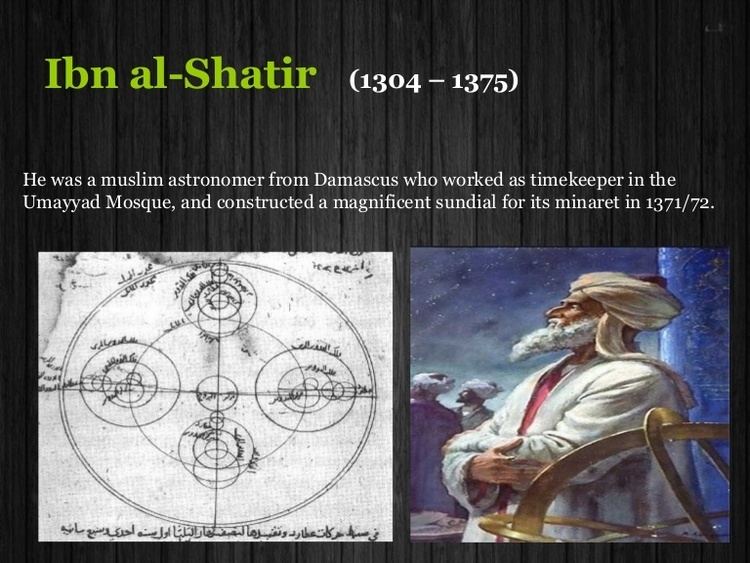Name Ibn al-Shatir | ||
 | ||
Parents Ali bin Ibrahim bin Muhammad Similar People Nasir al‑Din al‑Tusi, Nicolaus Copernicus, Miskawayh, Avicenna, Fakhr ad‑Din ar‑Razi | ||
ibn al shatir
Ibn al-Shatir or Ibn ash-Shatir (Arabic: ابن الشاطر; 1304–1375) was an Arab astronomer. He worked as muwaqqit (موقت, religious timekeeper) in the Umayyad Mosque in Damascus and constructed a sundial for its minaret in 1371/72.
Contents

His most important astronomical treatise was kitab nihayat al-sul fi tashih al-usul ("The Final Quest Concerning the Rectification of Principles"). In it he drastically reformed the Ptolemaic models of the Sun, Moon and planets, eliminating the eccentric and equant by introducing extra epicycles.

Although his system was firmly geocentric (he had eliminated the Ptolemaic eccentrics), the mathematical details of his system were identical to those in Copernicus's De revolutionibus. It is unknown whether Copernicus read ibn al-Shatir.

